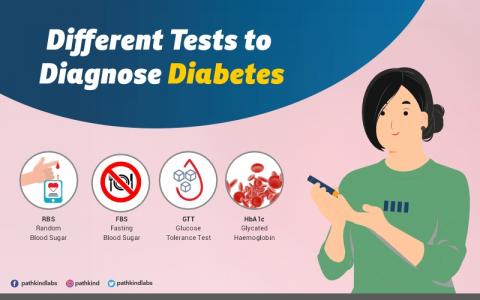Fasting plasma glucose is a laboratory test that measures the concentration of glucose in the blood after an individual has fasted for at least 8 hours. The test is used to diagnose or monitor diabetes mellitus, a chronic condition characterized by high levels of glucose in the blood due to defects in insulin production, insulin action, or both. Normal fasting plasma glucose levels are typically in the range of 70-99 mg/dL. Levels between 100-125 mg/dL are indicative of prediabetes, while levels above 126 mg/dL on two separate occasions are diagnostic of diabetes.
Fasting plasma glucose is a laboratory test that measures the concentration of glucose in the blood after an individual has fasted for at least 8 hours. The test is used to diagnose or monitor diabetes mellitus, a chronic condition characterized by high levels of glucose in the blood due to defects in insulin production, insulin action, or both. Normal fasting plasma glucose levels are typically in the range of 70-99 mg/dL. Levels between 100-125 mg/dL are indicative of prediabetes, while levels above 126 mg/dL on two separate occasions are diagnostic of diabetes.
Why is the Fasting plasma glucose Test done?
Fasting plasma glucose (FPG) testing is done to diagnose or monitor diabetes mellitus. Diabetes is a chronic condition characterized by high levels of glucose in the blood due to defects in insulin production, insulin action, or both. Insulin is a hormone produced by the pancreas that helps regulate blood sugar levels by promoting the uptake and utilization of glucose by cells for energy. The various forms of diabetes include type 1, type 2, and gestational diabetes. The insulin- producing cells in the pancreas are destroyed as a result of type 1 diabetes, an autoimmune illness. Insulin resistance and inadequate insulin production are two features of type 2 diabetes, a metabolic condition. Gestational diabetes is a kind of diabetes that develops during pregnancy and typically disappears after birth. Fasting plasma glucose testing is typically done to diagnose diabetes or prediabetes. It is also used to monitor the effectiveness of treatment for diabetes and to assess the risk of developing diabetes or complications related to diabetes. The test may be repeated at other times, such as 2 hours after a meal, to assess postprandial (after eating) glucose levels.
Who should get tested for Fasting plasma glucose?
There are several groups of people who should consider getting tested for fasting plasma glucose (FPG):
- People who have symptoms of diabetes, such as increased thirst, frequent urination, fatigue, and blurred vision.
- Those with a family history of diabetes, are overweight or obese, or both.
- People who have high blood pressure, high cholesterol, or a history of heart disease.
- Women who are expecting and have a history of gestational diabetes.
- People who are over the age of 45.
It is crucial to remember that not everyone with diabetes will experience symptoms, so getting tested is a good idea even if you are symptom-free. It is a good idea to speak with your healthcare professional if you have questions about the significance of FPG testing or your risk for developing diabetes. They can assist you in determining whether FPG testing is right for you and your risk for developing diabetes.
How to prepare for the Fasting Plasma Glucose Test?
Here are some steps you can take to prepare for a fasting plasma glucose (FPG) test:
- At least eight hours prior to the test, go without food. Therefore, only water may be consumed in place of food or beverages.
- Continue taking any prescribed medications as directed by your healthcare provider.
- Avoid strenuous physical activity for at least 24 hours before the test.
- Avoid alcohol for at least 24 hours before the test.
- Inform your healthcare provider about any other medications you are taking, including over-the-counter medications and herbal supplements, as they may affect
the results of the test.
It is essential that you adhere to the guidelines set forth by your healthcare physician or the testing facility. The accuracy of the test results could be impacted by failing to adhere to these guidelines. A smart suggestion is to speak with your healthcare practitioner if you have any queries or worries about getting ready for the FPG test.
What to expect during a Fasting Plasma Glucose Test?
A healthcare professional or laboratory technician will take a blood sample from a vein in your arm during a fasting plasma glucose (FPG) test. The blood sample will be delivered to a lab for examination.
The blood draw itself is usually quick and relatively painless. The healthcare provder or technician will clean the area with an antiseptic and wrap an elastic band around your upper arm to make the vein more visible and easier to access. They will then insert a needle into the vein and draw a small amount of blood, which is collected in a vial or tube. The elastic band is then removed and a bandage is applied to the puncture site. The entire process usually takes just a few minutes. Some people may feel a slight sting when the needle is inserted, but most people do not experience any discomfort. After the blood sample has been collected, it will be sent to a laboratory for analysis. The laboratory will measure the concentration of glucose in the blood sample and report the results to your healthcare provider. Your healthcare provider will then interpret the results and discuss them with you.
Understanding the Fasting Plasma Glucose Test Result
Fasting plasma glucose (FPG) test results are typically reported in milligrams per decilitre (mg/dL). Normal FPG levels are typically in the range of 70-99 mg/dL. If your FPG level is between 100 and 125 mg/dL, it is indicative of prediabetes, a condition that can progress to diabetes if left untreated. Prediabetes is characterized by elevated blood sugar levels that are not high enough to be diagnostic of diabetes. Diabetes can be diagnosed if your FPG level is greater than 126 mg/dL on two different occasions. Diabetes is a chronic disease marked by elevated blood glucose levels that result from flaws in insulin synthesis, function, or both. Insulin, a hormone secreted by the pancreas, helps to regulate blood sugar levels. It is important to note that FPG test results should be interpreted in the context of other factors, such as your age, weight, and family history. Your healthcare provider will be able to interpret your FPG test results and discuss them with you in the context of your overall health and risk for diabetes or complications related to diabetes. If you have any questions or concerns about your FPG test results, it is a good idea to talk to your healthcare provider.They can help you understand your results and discuss any necessary treatment or lifestyle changes.




 NABL approved
NABL approved  Most Trusted by
Most Trusted by  Accuracy &
Accuracy &  Widest Range
Widest Range 



















